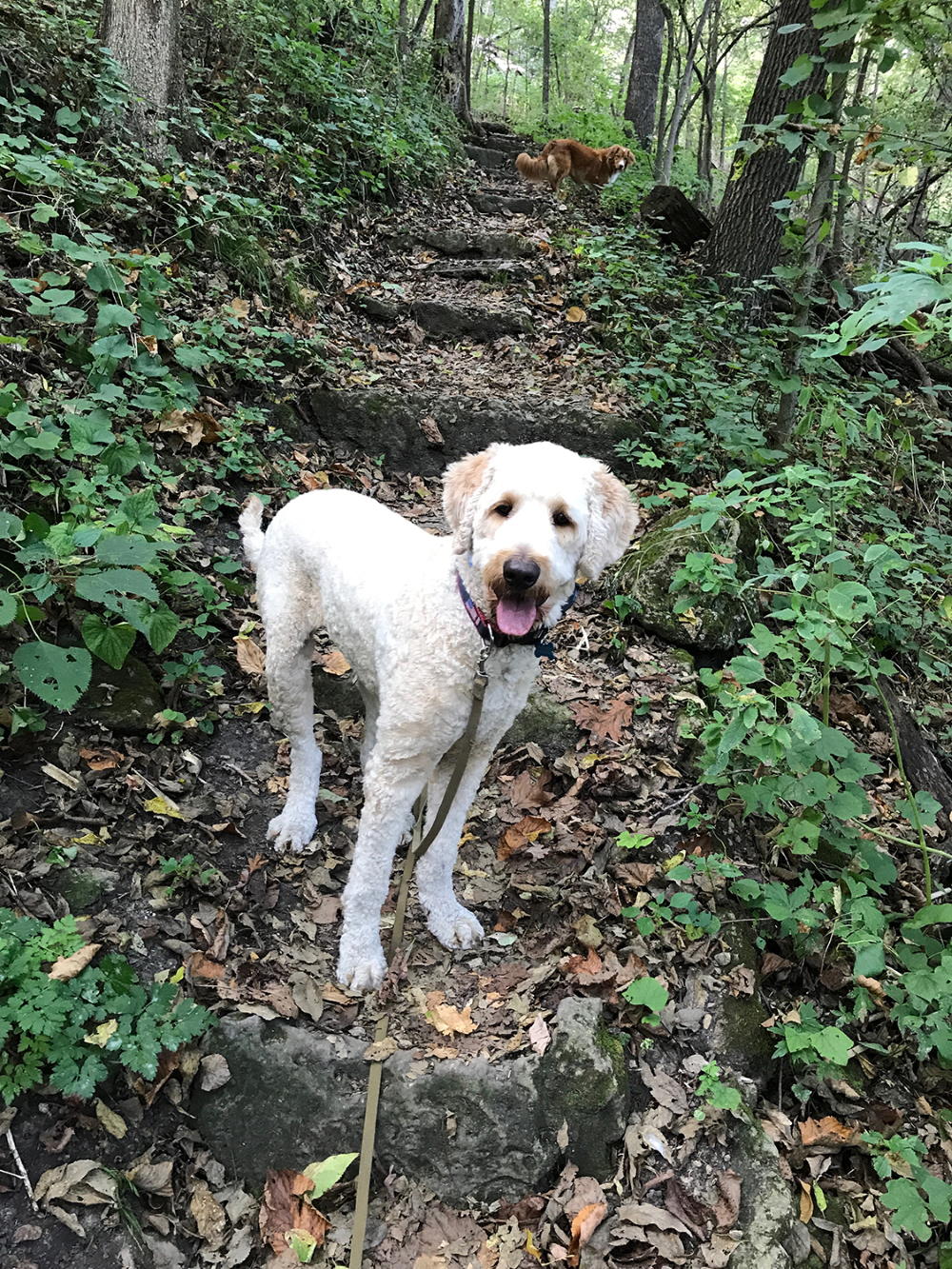WHY YOU STILL NEED AN E-COLLAR FOR LEASH TRAINING

E-COLLARS AND LEASH TRAINING
Using an e-collar as part of a balanced training program is one of the fastest ways to achieve off-leash control. Not only can your dog safely romp in wide open spaces, but you will have peace of mind knowing you can effectively gain Fido’s attention and call him back to you whenever needed.
Can an E-Collar Replace a Leash?
Having an e-collar doesn’t mean you won’t ever need a leash.
A leash (or longline) is a necessity in the early weeks of beginning e-collar training. The leash gives us a way to help the dog perform the correct response, rather than Fido having to guess and figure out for himself how to make the weird sensation go away.
Just in case you’re thinking, “but my dog KNOWS what I want him to do, and he’s just being stubborn!” I want to reassure you that this is very rarely the case, and it is best to give the dog the benefit of the doubt when you are starting out.
Using a leash in those early weeks of training allows us to quickly and easily help the dog learn how to “turn off” the sensation. And that will reduce the likelihood of developing a stressful or superstitious response to the training.
The easier we make it for the dog to learn, the faster our dog believes they have control over the situation, and that makes for a happy, confident and content dog.
How to Use an E-Collar for the First Time?
We have to remember that the first time you use an e-collar is the first time that the dog feels this unique sensation. It is something they’ve not experienced before. They will not know why they are feeling it or what to do about it. Just like the first time we put a leash on a puppy to restrain him or use clippers, brush, or blow dryer to groom. All of these firsts are new to the puppy, and it is up to us to guide him through the experience and teach him how to respond.
Use the Leash for Better Control of a Dog with an E-Collar
The best way to reduce any possibility of stress due to the confusion the sensation may cause is to help the dog comply with our expectations. Guidance with a leash is one of the easiest and most efficient ways to provide that help.
Let’s look at recall training as an example: Some of the most common mistakes made with an E-Collar happen while trying to teach the dog to come when called. The owner calls the dog to come, but the dog doesn’t comply, so the owner pushes the button on the e-collar to correct him for not listening. The dog owner assumes if they correct the dog with the e-collar, he will now turn and come back.
But it is a very big assumption to believe that the dog understands the static sensation as a consequence of not listening because, remember, the dog hasn’t felt the sensation before!
Without a leash or long line attached to the dog so you can guide and help him understand the correct response, any number of possibilities can happen.
How an E-Collar Can Affect Your Dog
The dog may come running back, which would be great, and he would discover that coming back toward the owner made the weird sensation go away. But Fido might also move away from the location where he assumed the strange sensation came from…and the direction he moves may be AWAY from his owner. The uneducated e-collar user might press the button again and again or even turn up the sensation, assuming the dog is being defiant.
And now we’re creating an even bigger problem because the dog thinks the “weird sensation spot” is chasing him!
As you envision the above scenario, it becomes obvious why having a long line for the dog solves all of these problems. By guiding with the line, AS SOON AS you apply the stimulation, you help the dog move toward you and ensure that he is learning how to respond properly.
When You Can Stop Using a Leash During E-Collar Dog Training
As the dog gains an understanding of What To Do when he feels the stimulation, he gains confidence and responds more quickly. As that happens, the need to guide with the leash decreases, and eventually, the dog responds without needing any help at all.
Once the dog is clear about how to respond, the leash can come off, and your dog can romp unencumbered, provided that you are in an off-leash area. It is still important to respect local leash laws, even after you’ve achieved this level of reliable training with your dog.
Final Thoughts
In conclusion, using an e-collar for dogs without a leash should not be taken lightly. It is important to understand that an e-collar is a tool that can be used to enhance communication with your dog and reinforce positive behaviors, but it should never replace proper training. Before considering using an e-collar without a leash, you must invest time and effort in training your dog to respond reliably to commands and understand the boundaries you set. You can only remove a leash after your dog has demonstrated the ability to consistently follow commands and respect boundaries, even in distracting environments. Following these guidelines ensures that your dog stays safe and happy while enjoying more freedom with an e-collar.




